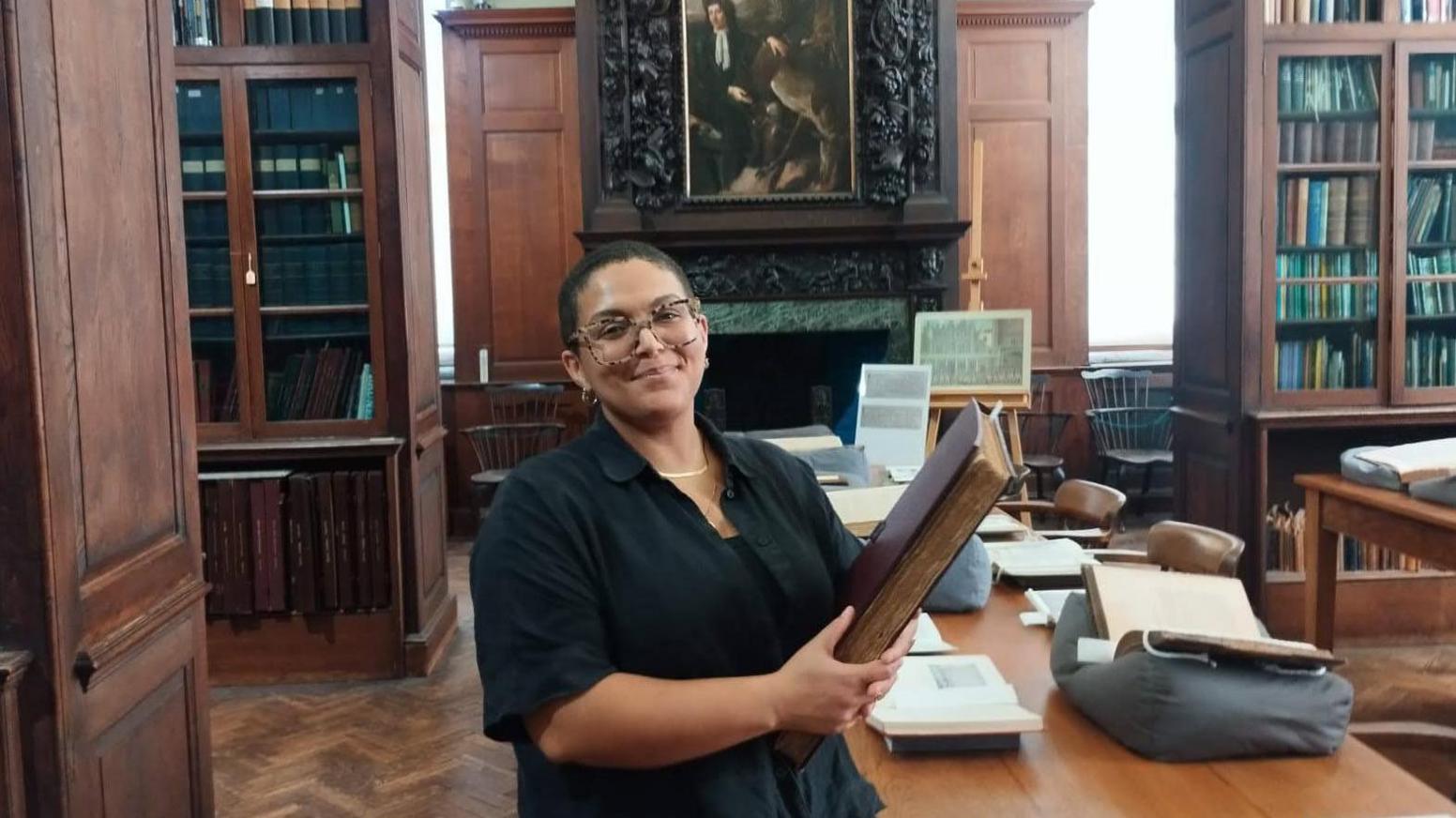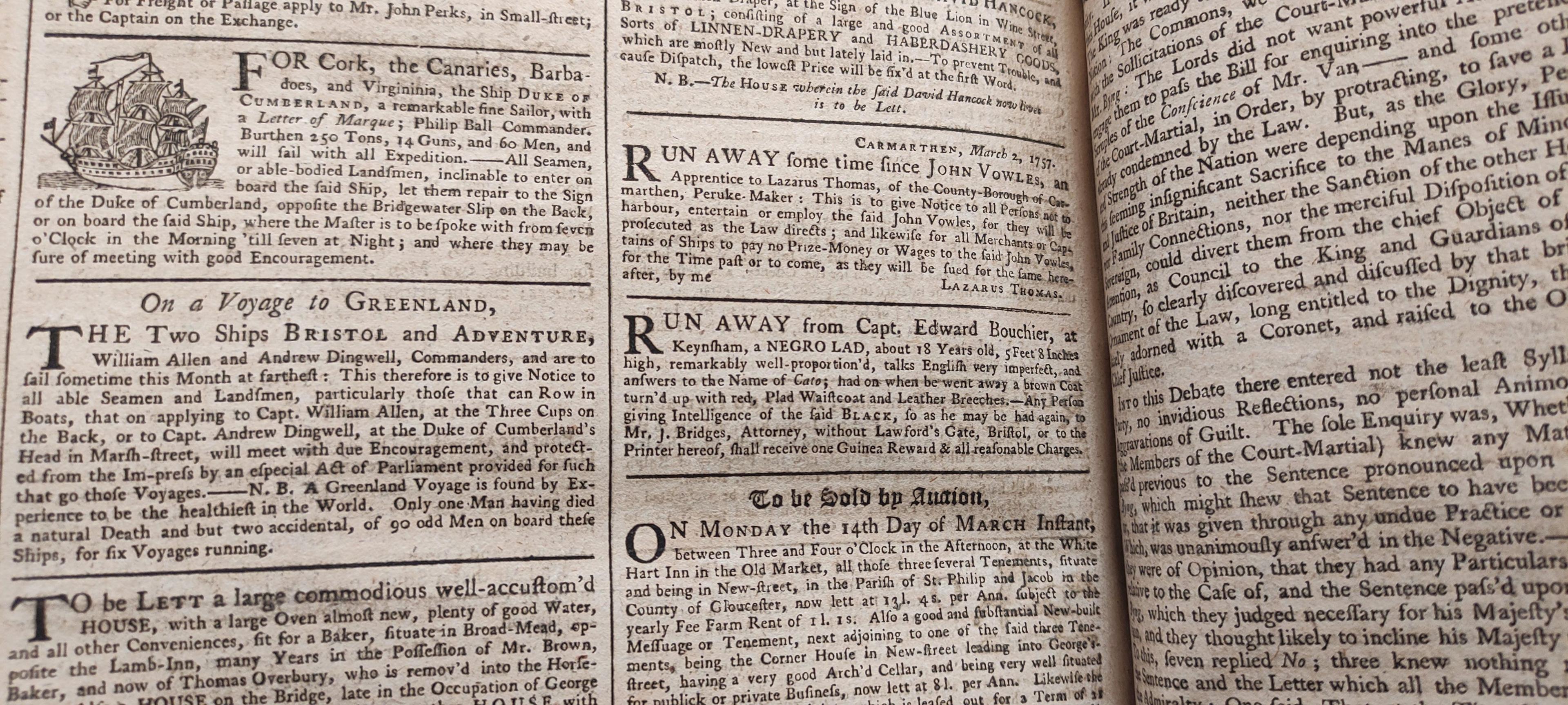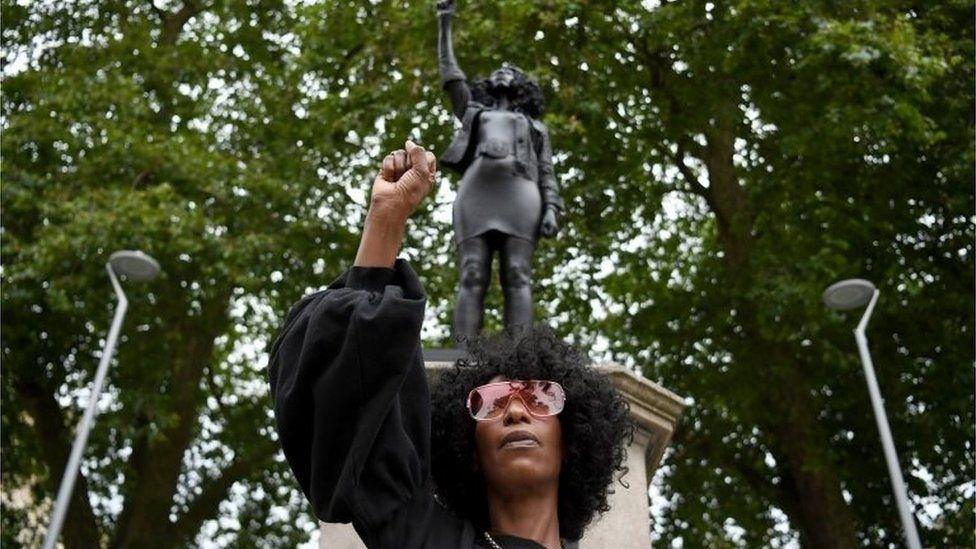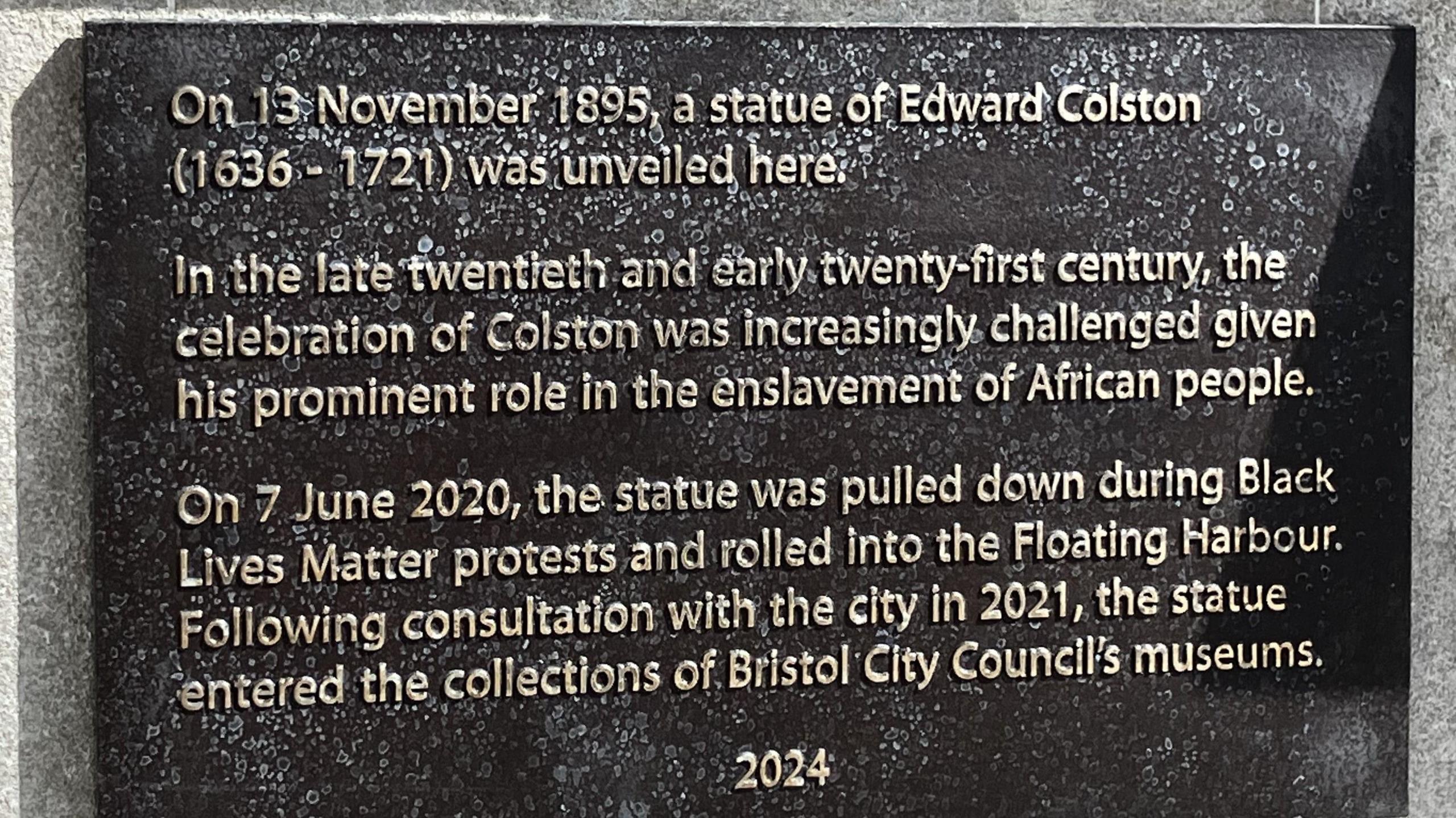Hidden history of fugitive slaves revealed

Artist Heather Marks is using material from Bristol's archives to reveal the hidden history of runaway slaves
- Published
An exhibition is showing 13 stories of fugitive slaves that were published in newspapers in the 18th Century.
Artist Heather Marks is using material from archives in Bristol to reveal the hidden history of runaway slaves.
She said: "This is an opportunity to make it more known that this British history, this history of resistance, is actually just on our doorstep."
Her exhibition in Bristol Central Library, running until 30 November, presents adverts published in the city's newspapers Felix Farley's Bristol Journal and Bonner & Middleton's Bristol Journal.
Adverts for people who were enslaved would outline their physical description, whether they spoke English and the circumstances of their escape.
They would also offer rewards for their capture.
Ms Marks added: "There's instances where people who are trying to capture these runaways complain of the fact that they are able to 'disappear into the mob'.
"By which they mean the working classes in certain neighbourhoods. It's really fascinating to find out about that kind of class solidarity at that time."

An advert for 18-year-old Cato published in 1757 in the Felix Farley's Bristol Journal
For a lot of people, these advertisements are the only record that they lived in Bristol at all.
Enslaved people could not record marriages, have wills or own property in most cases.
This means that the newspaper's columns are among the only surviving traces of individual enslaved lives in Britain and their resistance against ownership is the reason they are findable in history.
"That doesn't just mean that that's the end of their story.
"Wherever they went, if they managed to stay free, they would have made friendships.
"They would have created relationships with other people, they would have had children.
"Those children would have then had children, so, it's like, they're still here, even though this was not in the archive," added Ms Marks.
The exhibition will also include a short film, "Fugitives in the Archives", a piece which follows the life of Jeremiah Rowland.
He was a runaway in 1769 and the film explores what his life could have been beyond the limits of the archived information.
Get in touch
Tell us which stories we should cover in Bristol
Follow BBC Bristol on Facebook, external, X, external and Instagram, external. Send your story ideas to us on email or via WhatsApp on 0800 313 4630.
Related topics
- Published24 May 2021

- Published4 October 2024

- Published17 April
